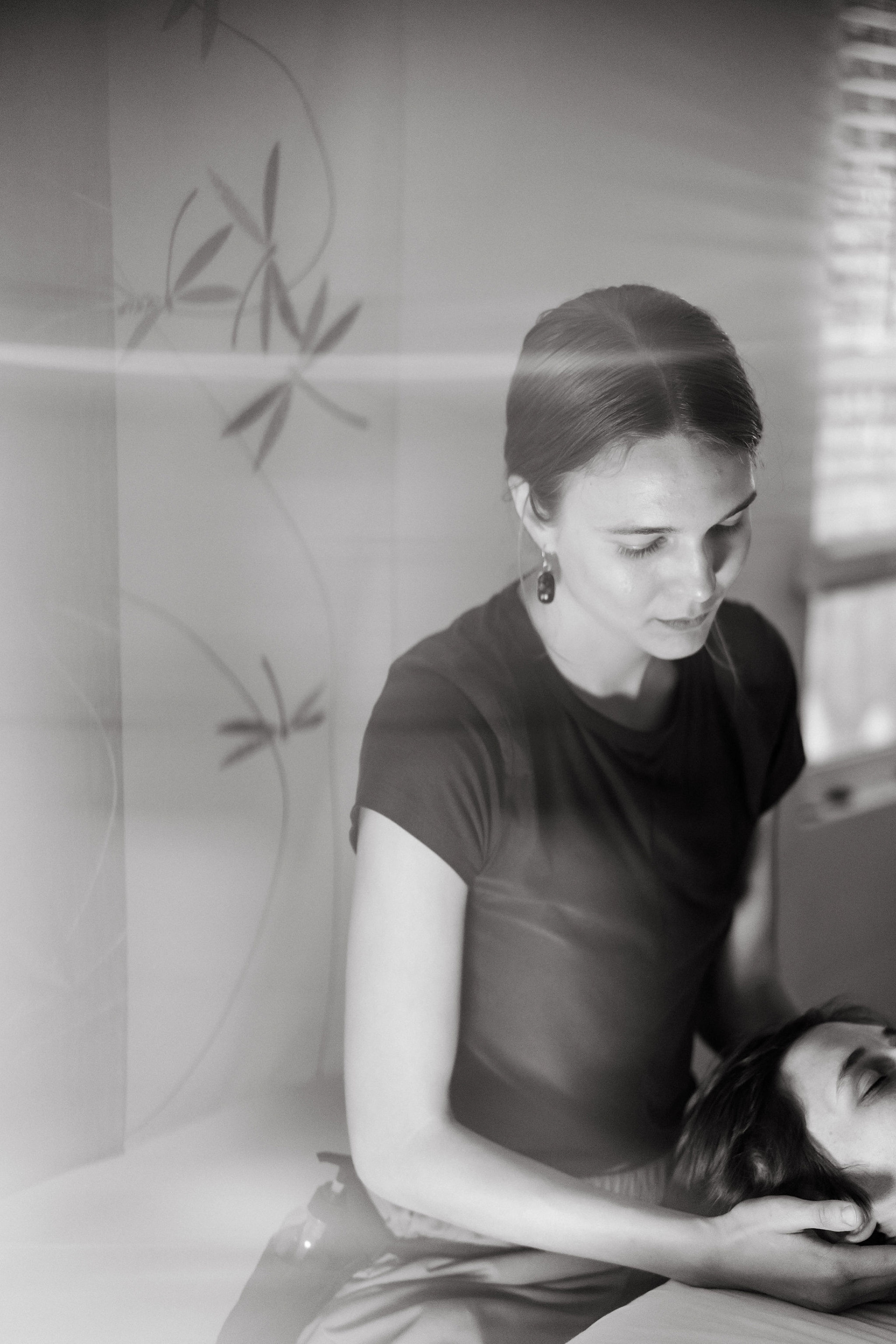

What is Craniosacral Therapy?
Craniosacral Therapy (CST) is a gentle, hands-on approach that supports the body’s natural ability to release tension and restore balance.
Craniosacral therapy works directly with the craniosacral system—the bones, connective tissue, membranes, and cerebrospinal fluid surrounding the brain and spinal cord. Through palpation and deep listening, the practitioner gently encourages your body to restore its natural rhythm, unwind tension patterns, and find more ease.
History of CST
Craniosacral Therapy is a constantly evolving field. It has its roots in osteopathic medicine, founded in the late 1800s by Dr. Andrew Taylor Still. Still developed osteopathy with influence from his Western medical training and Shawnee healing traditions, which emphasized harmony, natural rhythms, and the body’s innate capacity to heal.
One of Still’s students, Dr. William Garner Sutherland, went on to explore the subtle movements of the cranial bones and developed what became known as cranial osteopathy. Later, in the 1970s, Dr. John Upledger expanded and refined this approach, coining the term “Craniosacral Therapy” and opening the work to practitioners outside of osteopathy, such as massage therapists, physical therapists, and other hands-on providers.
Since then, different schools of Craniosacral work have developed, including Upledger (CST), Biodynamic (BCST), and others — each with its own emphasis and philosophy.
My Style
My style is primarily influenced by the Upledger style of Craniosacral, with other elements unique to my teacher. The work is both systematic and intuitive. It is also collaborative; my goal is to connect to the client’s own inner wisdom and let it lead our work together.
Emotional Release
Craniosacral therapy, like many types of bodywork, can help bring consciousness to the emotional roots of a physical symptom. This therapeutic process may include the release of emotion through tears, laughter, etc.
Many practitioners incorporate a conversational inquiry method of SomatoEmotional Release (SER), in their sessions. While I am not trained in SER, I have extensive experience holding space for emotional release when it arises naturally in session. With gentle guidance, I support clients to remain grounded and present through the process.
My Scope of Practice
I am in the early stages of my CST training and currently offering CST to adults (16+) who aren’t pregnant. While I don’t yet practice with babies or children, I can refer you to providers who specialize in those populations
How CST Helps
Craniosacral Therapy can have wide-reaching effects because the craniosacral system influences the central nervous system and, through it, the entire body. Clients often seek CST for support with:
- Stress, tension, anxiety, depression
- Headaches and migraines
- Chronic neck, shoulder, and back pain
- Jaw pain /TMJD
- Painful periods
- Whiplash
- Sleep disturbance
- Grief, life transitions
What to Expect
You can expect remain fully clothed unless we are integrating massage with your Craniosacral session. You will be face-up on a treatment table while the practitioner uses gentle contact along the feet, legs, hips, spine, and head. Other positions such as side-lying and face-down are possible if needed for your comfort.